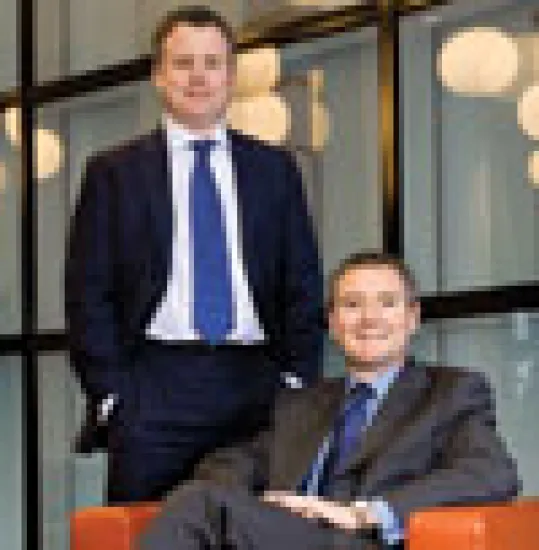The pace of climate change investment stepped up a notch in May when Universities Superannuation Scheme, the U.K.’s second-largest pension fund, with assets of £30.1 billion ($59.6 billion), announced it would be one of four equity investors in a £56 million round of financing for London-based investment bank Climate Change Capital Group.
CCC invests in companies working on alternative sources of energy like wind and solar power as well as in businesses developing products to reduce carbon dioxide emissions. The firm also manages funds that operate in the nascent market for carbon credits, the tradable chits earned by companies for reducing their carbon emissions below voluntary or government-mandated levels.
Together with U.K. investment firm Alliance Trust, Dutch banking and insurance company SNS Reaal, and Japanese trading and investment firm Mitsui & Co., USS will own slightly more than 50 percent of CCC. The investment includes working capital for CCC and replaces early-stage capital from New York–based Och-Ziff Capital Management Group and London-based Man Group’s RMF fund, the latter of which is retaining a stake in the business but will give up its board seat at CCC. The four investors are also providing commitments totaling £20 million of seed capital for future climate change managed funds, which sources tell Institutional Investor include a fund that will invest in retrofitting homes to make them more energy efficient.
USS has been investing in climate change solutions, including CCC funds, since the turn of the millennium, but this is its first direct investment in CCC itself. The CCC stake falls within the direct private equity portfolio of USS’s alternative assets program. The pension fund is a founding member of both the Enhanced Analytics Initiative, an effort by institutional investors to encourage analysis of extra-financial issues like environmental impact in research, and the United Nations Principles for Responsible Investment Project, a commitment by investors to consider environmental and social issues as well as corporate governance in their decision making.
“This has a very powerful demonstrative effect on other players,” says Matthew Kiernan, chief executive of Innovest Strategic Value Advisors, a Toronto-based environmental investment research advisory firm. He thinks the pension scheme’s move is a “bold, sensible thing for them to do,” although he adds that climate change investing “doesn’t translate automatically into a return for your portfolio.”
Peter Moon, chief investment officer at USS, however, thinks the risks are justifiable given his investment horizon. “We look at sectors that we expect will give a better performance over a much longer time period than the usual time restrictions that most money managers have,” he says. “We can actually look forward ten or 15 years to get our returns, and that really is a much more sensible time frame when you’re looking at pensions whose actual liabilities are 15 to 20 years out anyway.
“We know climate change investing is embryonic in terms of the solutions being put forward,” Moon says. But, he adds, “we know there are likely to be significant changes in terms of the economics between fossil fuels and other types of energy production.”
David Russell, co-head of responsible investment for USS, says: “We got into a number of equity-based funds in the early part of the decade and then there was the crash of the market, which took them down, as it did many tech-based funds. Many of the funds we invested in have come back and done well.”
USS began making investments in renewable energy in 2005, but Russell and Mike Powell, the plan’s head of alternative assets, say it’s still too early to know how well those will perform. They note, though, that they are pleased with the way external managers are allocating capital and expect their long-term returns to be in line with expectations. Powell says those expectations vary according to the type of asset, investment strategy and associated risk, but that investments in onshore wind farms should generate internal rates of return in the low to midteens, and investments in clean-technology-related buyouts or growth equity are expected to generate IRRs of more than 20 percent.
“We believe the drivers are there to add value over the long term,” says Russell. USS most recently invested alongside seven other institutions in a CCC-run private equity fund targeting the high-growth, clean-tech areas of power, transportation, energy efficiency, waste recovery and water across Europe. That fund closed in September with €200 million ($311 million). CCC declines to comment on its performance.
USS currently has about 5 percent of its assets invested in alternatives and recently raised its target allocation to 20 percent. “The 20 percent shift is actually a very big one for most U.K. pension funds,” says Powell, “but we’re different from many large pension funds in that we’re still immature and cash positive for a number of years, so we can afford to take a relatively long-term approach to investing in alternatives and trying to get equity-type returns.” (USS became operational in April 1975, replacing a former insurance-policy-based arrangement. The number of active members paying contributions is currently more than the number of pensioners receiving benefits, and this is expected to continue for the foreseeable future.) Moon says USS is “cash positive to the tune of £1.4 billion a year” and is allowing cash balances to build up rather than investing in equity markets at what he says is an inopportune time. Moon anticipates poor equity market performance during the next 18 months or so, making this a good time to be investing “more in the alternative asset area rather than the quoted equity market.”






